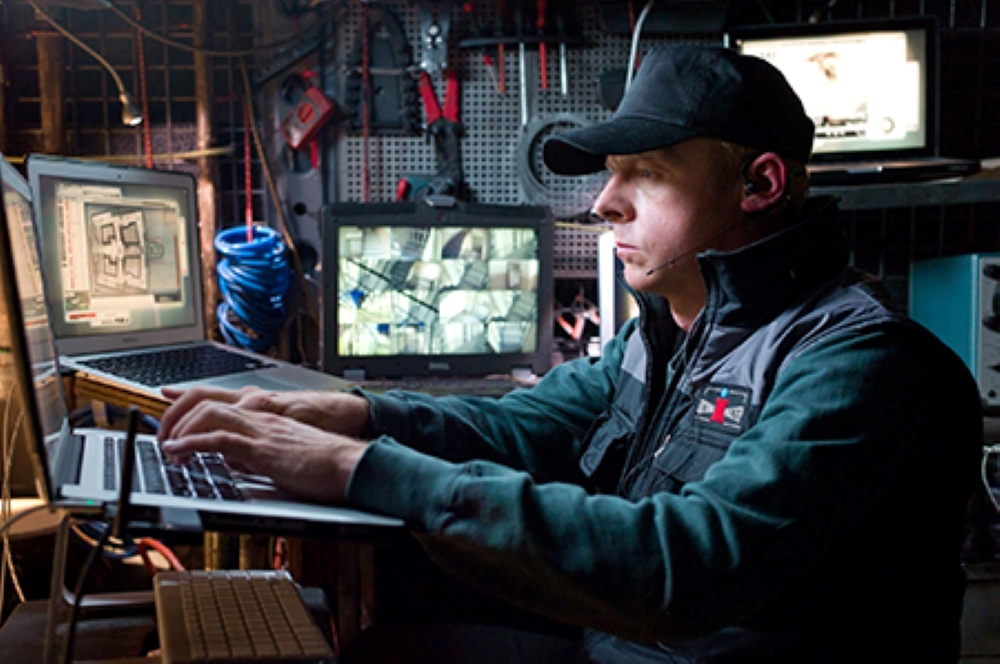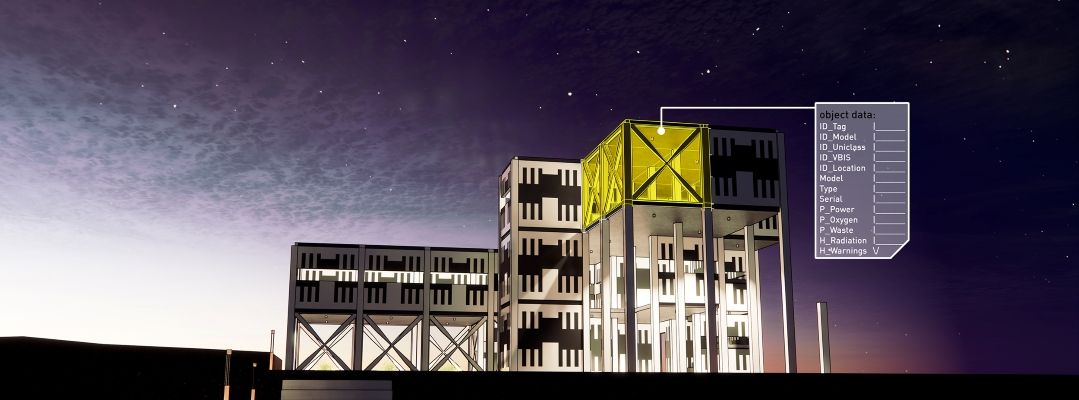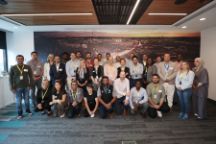Swinburne’s ‘BIM translator’ on the future of digital engineering

‘BIM translator’ Will Joske uses the analogy of computer simulations saving the hero in movies to explain the process and objectives of BIM.
In summary
- BIM makes digital data and 3D models work together and is a vital part of all stages in the lifecycle of our built assets.
- Swinburne’s ‘BIM translator’ Will Joske explains that anytime you watch a movie character navigating a building with a computer-generated map, Building Information Modelling (BIM) would be the real-world tool to make it happen.
- Mr Joske believes there are still challenges before virtual construction and information management become the industry’s way of working.
Have you ever watched a sci-fi or thriller movie where the hero is running through a series of underground tunnels, train stations and airports? Meanwhile, the nerdy and pleasingly sarcastic tech genius is in the van, surrounded by electronic equipment, and tells them exactly when to turn left, which door to open and what code to use for the security lock. All this information is part of a computer-generated map or 3D maze updated in real-time as the chase continues. A virtual version of the real thing.
But where did all the secret information come from? In the movies we will never know, but in the real world it might be Building Information Technology (BIM). If you haven’t heard of BIM, you’re not alone. That’s where Swinburne’s principal advisor for BIM, or ‘BIM translator’, Will Joske, comes in.
Mr Joske has worked at Swinburne’s PAVE since 2019, teaching the short course ‘2 Days to BIM' for those with industry experience and the Associate Degree of Applied Technologies – Building Information Modelling, which provides students with in-depth knowledge of the role of BIM and digital engineering.
The intricacies of BIM
‘The analogy that likens movie tropes to the construction industry is just one strategy that helps students better understand the role of BIM and digital engineering,’ Mr Joske says.
BIM makes digital data and 3D models work together, with many technical advantages and challenges. Virtual reality, coordinating and clash detecting complex structural and services, simulating construction sequences and mapping pedestrian movement are just some of the opportunities that BIM provides.
BIM enables a 'golden thread' of structured and validated information into the operational phase of our buildings and infrastructure. The phrase ‘golden thread’ was central to the 'Building a Safer Future' report released after the 2017 Grenfell Tower fire in London that recommended BIM to manage the digital records of buildings and make safety information accessible.

A basic concept of BIM, digital data and 3D models interrelate to deliver the right information to the right people at the right time.
Creating the next BIM specialists
Many tools for BIM have already been adopted in the industry, but due to its complexity there are still many challenges ahead, Mr Joske believes. ‘The solutions to those challenges will rely on leadership, digital literacy, consistency and an approach to broadening knowledge and skills.’
He says that higher education and vocational courses are ‘critical’ in fostering digitally literate, future workers. These courses need to extend beyond the ‘technical’ solutions and include aspects of leadership and change management, like Swinburne’s.
‘The future of our industry places far greater value and dependence on data, and this is impacting all aspects of the construction industry in some way,’ he says. ‘My role gives me the opportunity to learn from others while passing on my knowledge which is always rewarding.’
-
Media Enquiries
Related articles
-

- Technology
- Science
- Engineering
Victorian students drive green energy transition through international hydrogen competition
Swinburne’s KIOSC, in collaboration with Horizon Educational and Gippsland Tech School, co-hosted the Hydrogen Grand Prix in Melbourne.Friday 26 July 2024 -

- Technology
- Health
New MedTechVic prototypes to transform everyday lives of people with a disability
Swinburne’s MedTechVic has revealed three new prototypes designed through the joint Health-led Manufacturing Innovation Program, in partnership with the Australian Medtech Manufacturing Centre and Safer Care Victoria
Friday 19 July 2024 -

- Education
- Engineering
Transforming the lives of refugee engineers through the EPIC Program
Swinburne has been partnering with the Level Crossing Removal Project (LXRP) on the Engineering Pathway Industry Cadetship (EPIC) program, helping refugee engineers gain international qualifications for the Australian workforce through an 18-month paid cadetship program.
Thursday 20 June 2024 -

- Science
- Engineering
Submarines in the future could self-identify cracks and self-heal thanks to Swinburne researcher
Thanks to the work of Dr Nisa Salim from Swinburne University of Technology’s School of Engineering, future submarines could self-identify microcracks and self-heal using a new kind of carbon fibre reinforced polymer composites.
Monday 17 June 2024 -

- Business
- Technology
Swinburne’s Luminate Pitch Night 2024 advances innovative ideas for a better world
Swinburne’s 2024 Luminate Pitch Night showcased market-ready ideas from 10 founders
Wednesday 12 June 2024

